Salary Survey: The Age of COVID
With large shift to decentralized strategies, industry roles appear set for change.
Our 2022 Clinical Research Industry Salary and Employee Satisfaction Survey Report, a biennial survey of clinical trials professionals, conducted with our survey partner SCORR Marketing, shows no overwhelming deviations this year from previous years. However, our 2020 survey was conducted and published prior to the COVID-19 lockdowns. This update, conducted and analyzed in Q4 2021, included questions to highlight some of the concerns regarding clinical research employees’ salary and job satisfaction in light of the pandemic.
Consistencies with 2020
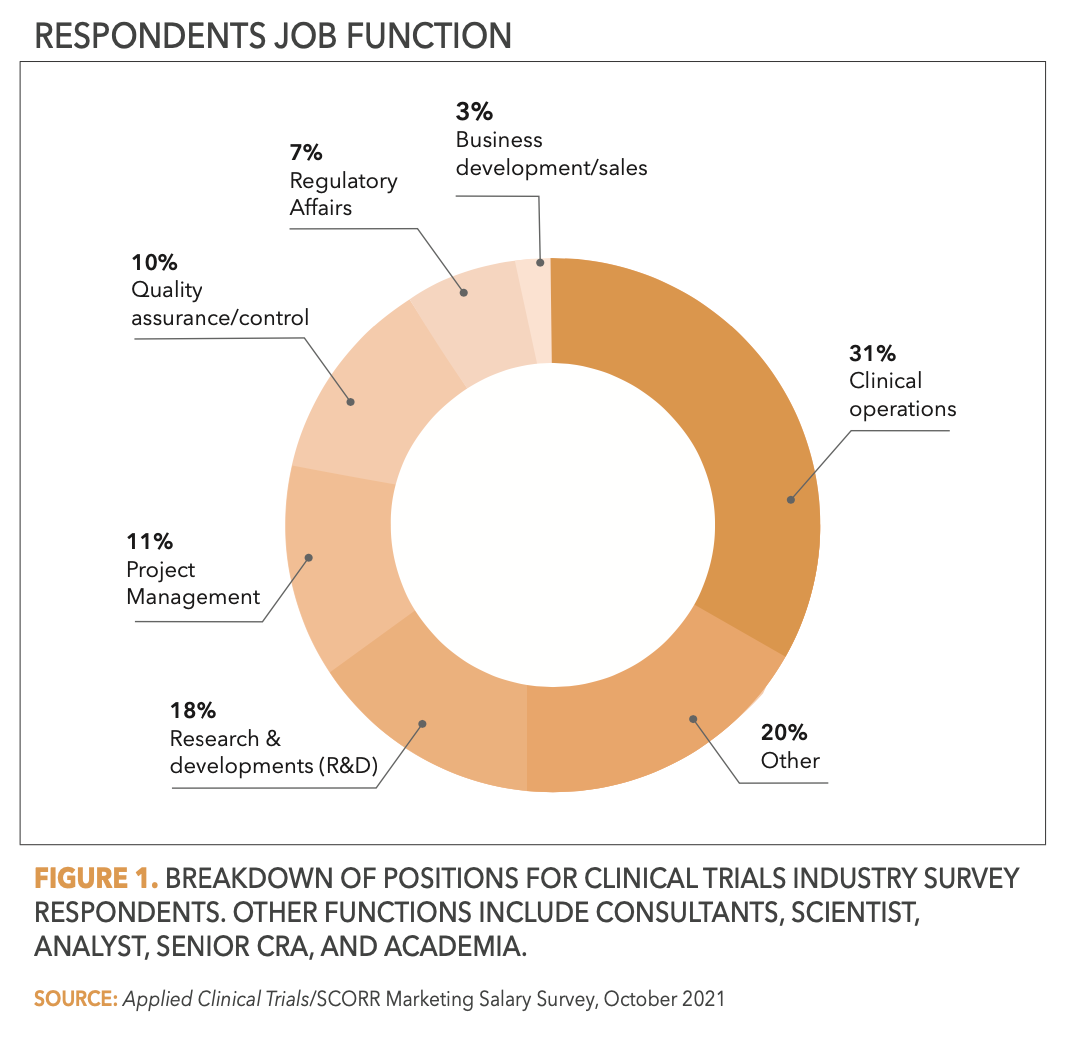
Keep in mind that this is an open survey to subscribers of Applied Clinical Trials, which is a very diverse representation of roles, types of organizations, and locations. In Figure 1, you can see the various functional areas and, expectedly, a higher proportion of clinical operations respondents, as that is our core content focus. This is also a similar representation from our 2020 survey.
Diving into the types of organizations our respondents work for was as follows:
- Pharma/biopharma sponsor - 23.5%
- CRO - 18%
- Academic institution - 12.5%
- Research site - 10.5%
- Biotech company - 9%
The remainder of the respondents were employed as consultants, with service providers, medical device companies, and other, which included manufacturers, non-profits, government, and healthcare. This compares roughly equally to our 2020 survey, with growth in pharma/biopharma and loss in the academic institution representation.
When we look at levels of responsibility, our respondent comparisons from 2020 to 2022 are listed in Figure 5 below. Again, these surveys are completely voluntary and confidential, but this information comes to bear when we examine job satisfaction levels, and more impactfully, salary levels.
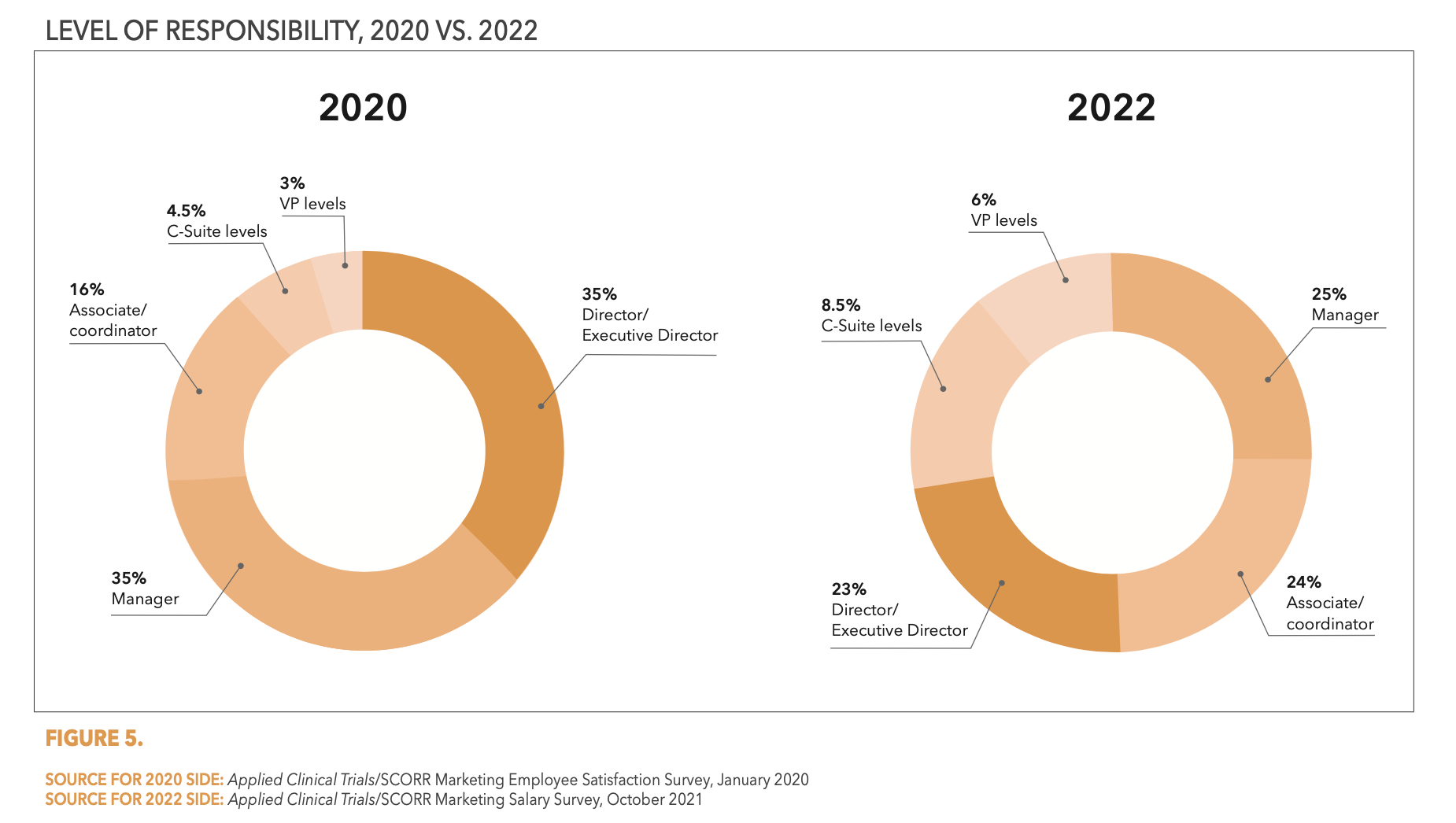
In our 2020 survey, we presented salary data in the aggregate. This year we segmented it by the levels of responsibilities and salary plurality, which is listed in Figure 2 below. Not surprisingly, when we look at the numbers of professionals that received supplemental income, such as bonus or commissions, the 40% majority do not. And the combined 30% that do receive that income average less than $10K. In addition, 75% of the respondents do not receive non-cash compensation such as a car, stock options, or mobile phones.
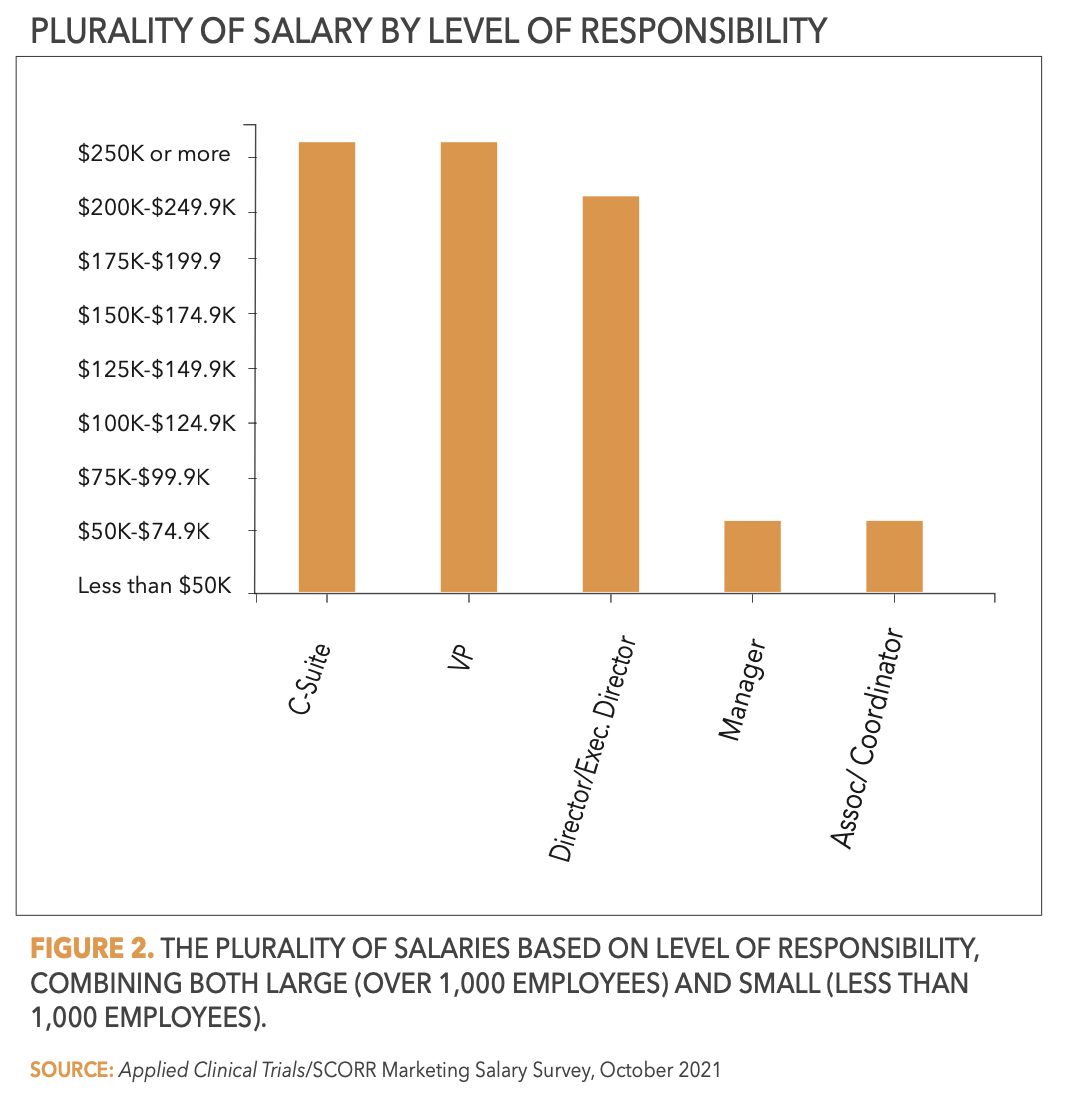
Additional CRO insights
Coincidentally, BDO publishes its annual CRO Industry Global Compensation & Turnover Survey at this same time each year. This survey collects data for 268 positions in the US and 55 countries outside of the US, and is designed to help clinical research outsourcing companies develop confidence in their pay levels by providing data necessary to gain insight into their compensation practices relative to the market. Its Insights Report offers an overview of the data.
When we last checked in with Judy Canavan, managing director and Compensation Surveys leader in BDO’s Global Employer Services practice, it was regarding their 2020-2021 insights report. The main takeaway then was the continued high rate of employee turnover within CROs, particularly for the clinical research associate (CRA) role. Average turnover in the US for clinical monitoring from 2015 to 2019 was 26%, which Canavan ascribed stagnant compensation levels relative to employee competency development as the main culprit. By mid-2020 with COVID in full swing, Canavan said employee resignation was signaling a growing concern. From a BDO-sponsored poll of 15 CROs year-to-date, US turnover was over 21% as of early November 2020.
The most recent 2021/2022 report better highlights the impact of COVID on CRO roles. Canavan tells Applied Clinical Trials that globally, at the early time of COVID, companies were not budgeting huge pay increases because of the uncertainty. “This is understandable,” says Canavan. “There were some layoffs, merit increases were either non-existent or lower than previous years. As the pandemic progressed, and companies figured out how employees could work from home, how they would be handling travel, and managing risk with patients, they became comfortable and business continued.”

But this is where CROs, as well as other industries around the world, missed the boat. Says Canavan, “Companies didn’t have a crystal ball and by continuing the compensation practices from April 2020, they didn’t catch up. It’s not just CROs.” Canavan notes ADP data that shows that people are switching jobs and getting bigger salary increases than in the past. This is occurring even with the raises that come with the Great Resignation, because inflation is up, and thus buying power is reduced. Canavan continues “…inflation is up, it’s affecting the wages, our economy. It affects how each individual sees their paycheck. For roles that receive less money, that will be more noticeable. The impact of the current inflationary economy varies by individual, it depends on their career stage and life stage whether they will feel those impacts more.”
CROs, which historically increased average pay from 1%-2% yearly, last year averaged a 4% increase. And Canavan notes increases targeted at the CRA and project manager levels. “Statistics broadly find that employees tend to switch jobs or companies after three to seven years and get the largest percentage increases to their salaries. In the later years, the percentages don’t go as high,” explains Canavan. “But this is tough on CROs. They lose the consistency and continuity of staffing for their studies.”
This turnover in the CRA and project-manager job families has been an age-old problem in the industry. It is a source of angst among pharma sponsors when they lose that primary relationship on their study. But COVID made an already existent turnover issue much worse. The solution? Canavan says that CROs are in catch-up mode.
In the BDO report, Canavan is quoted: “CRO companies face a unique dilemma: turnover is high and salary demands are increasing. However, multi-year contracts with plan sponsors may limit their ability to increase compensation levels as much as needed. As companies negotiate contracts, they may want to reconsider assumptions regarding pay increases for certain key positions in order to stay abreast of the market.”
She explained that CROs have to make assumptions over these multi-year studies and contracts regarding the average costs for the project managers, and if you assume a 2% increase over a year, that is built in. But now, with the escalating salaries, Canavan is suggesting that CROs have plans in place to account for the enhanced competencies of an individual. In the first five to seven years, employee value increases much more quickly than 3% a year (a typical merit increase).
“Because the leaving and onboarding process is time-consuming and costly for employers, why not look to increasing the base pay via merit increases for current employees? You are going to have to find the money somewhere,” says Canavan. She is also pushing CROs to invest in their HR departments to help implement budgets, career ladders, and compensation/benefit levels the right way. “They are having a problem implementing some of these proactive practices,” says Canavan. The BDO report outlines in more detail how CROs can better help employee recruitment and retention.
Broader industry takeaways
As Canavan noted, the BDO survey is CRO-specific and is based on over 60,000 lines of data that are instructive to the CRO survey members to make decisions on overall job market roles and structure. Our survey explores respondents on an individual level. As such, our survey found that participants are more likely to receive supplemental income (e.g., a bonus) than non-cash, but the majority is $5k or less. However, we did not dive deeper to uncover if this was a sign-on bonus trend, or a stay-on-job bonus.
We found that the majority of respondents answered “No” to the question, “Has your company reduced its workforce in the past year?” at almost 75%. And as far as the “Turnover Tsunami” effect listed in Figure 3 below, there were different levels of waves, with a little over 20% finding no turnover. Anecdotally, an indeed.com search of jobs in clinical research brought back 32,727 positions available.
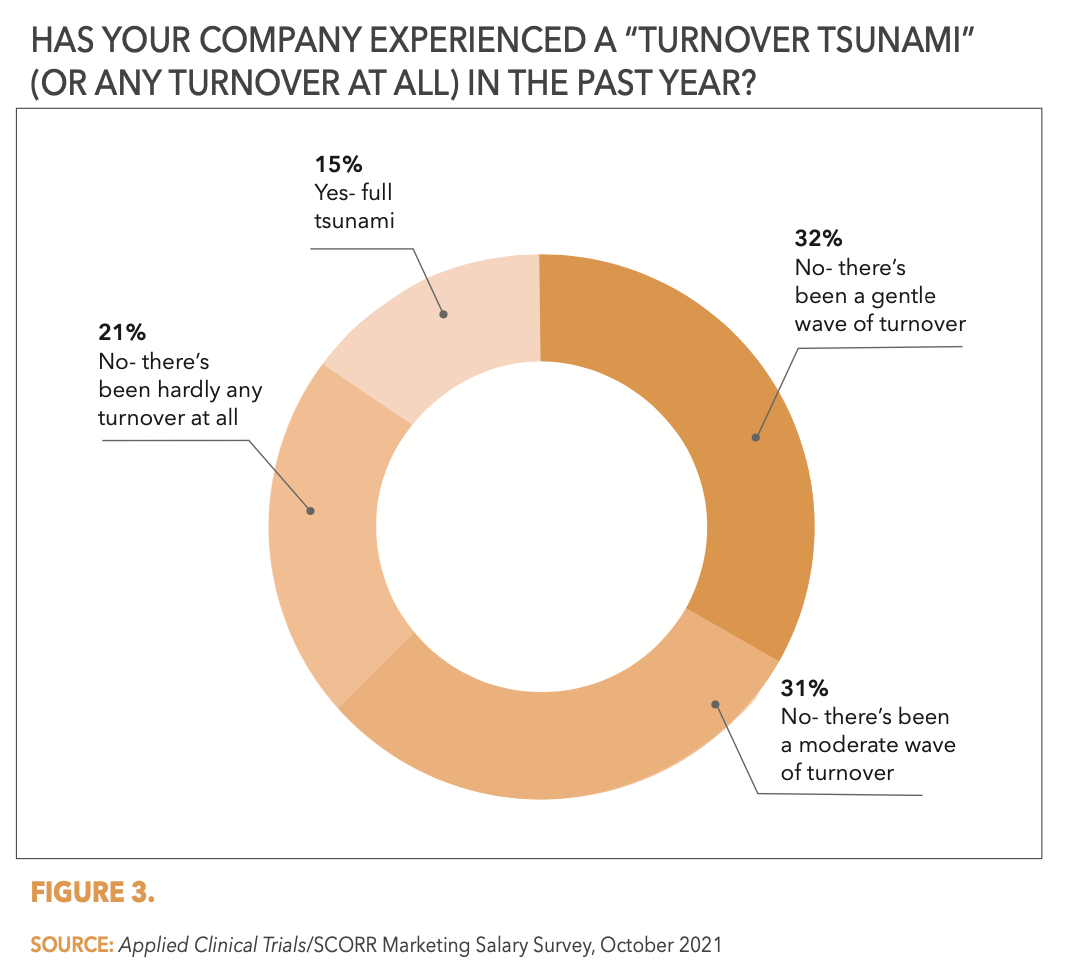
However, for individuals looking to change jobs this year—which was in the minority at 44%—reasons listed in order of response were better compensation, professional advancement, and better career development options and “better utilize my skills” tied for third. “Other” responses varied from work/life balance, low resources, and managerial issues.
For another COVID perspective, respondents felt their companies performed well with COVID in reducing the spread of the virus; providing remote work options; encouraging employees’ physical well-being; addressing employees’ mental well-being; and managing employee workloads.
One final note on the effects of COVID on job roles. Our survey did explore the effect of the pandemic and the impact on skills sets, which is shown in Figure 4 below. When we asked what the biggest challenge was outside of COVID, many said COVID was the challenge, with answers ranging from lack of travel or face-to-face meetings; working from home; and not being able to visit investigational sites.
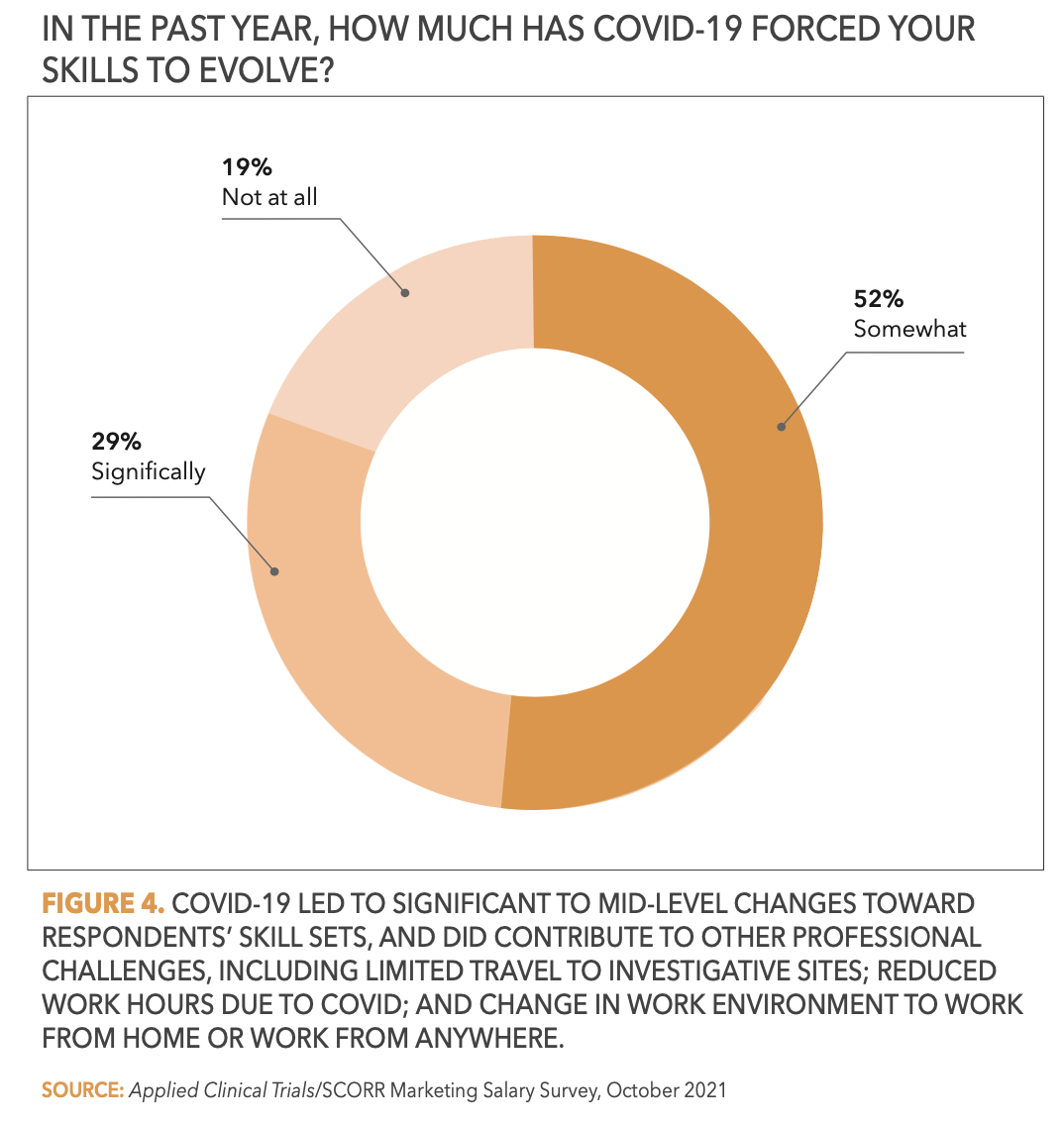
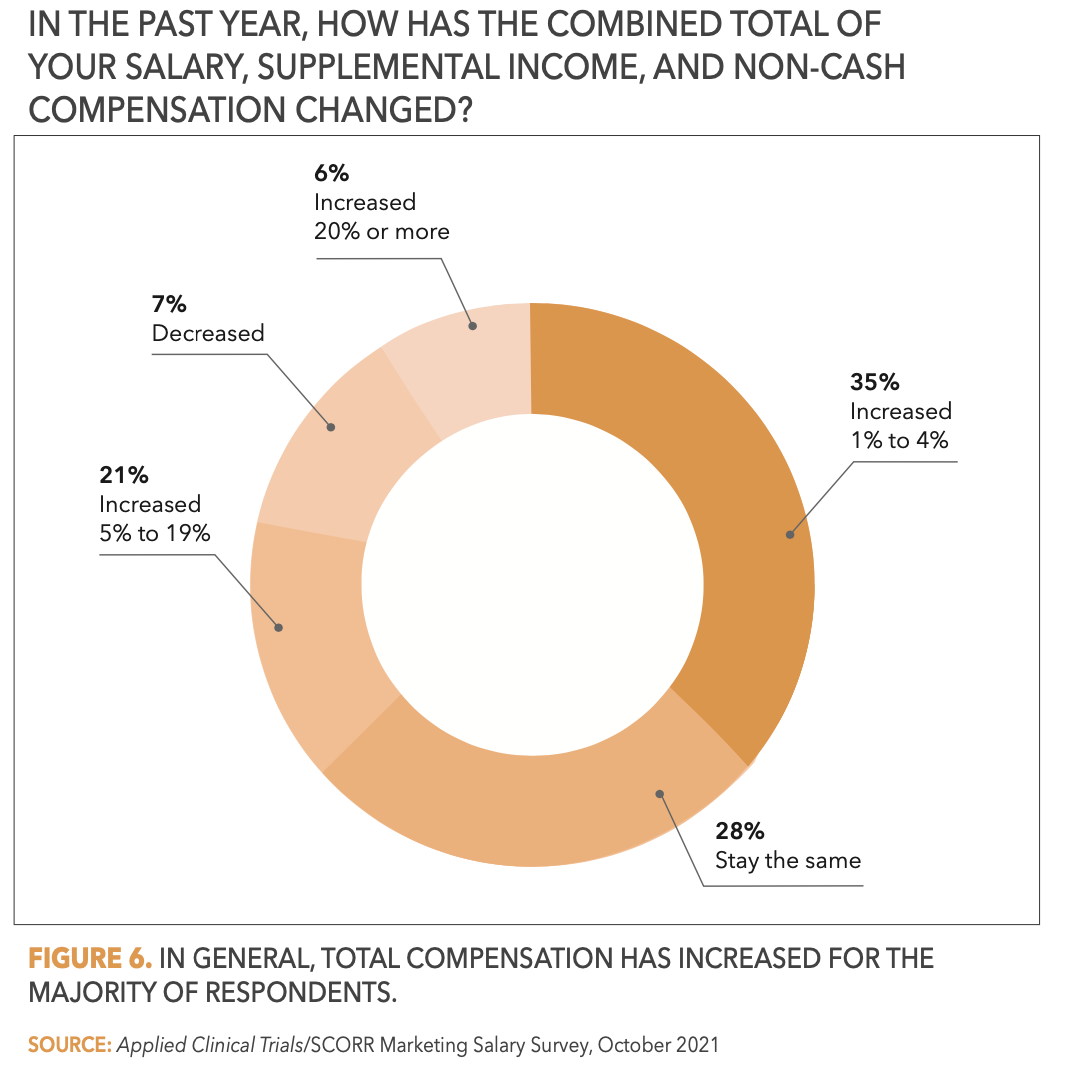
Clearly, the moves of clinical trials, working from home, and inability to visit sites sits squarely in the CRA role. With the increased use of remote monitoring, as well as other decentralized strategies coming to bear on clinical trial conduct, those roles will be evolving. Canavan believes we really can’t determine right now what the CRA job description will resemble in five years. However, with technology pushing to telehealth and remote monitoring, Canavan says there will most likely be a restructuring of the role. Turnover rates with CRAs could be tied to their very grueling travel schedules, she adds, demands that could potentially be de-stressed with those technologies. However, with the crisis of COVID hopefully soon over, time will be the true marker.
Download your free copy of the SCORR Marketing report.
Lisa Henderson is Editor-in-Chief of Applied Clinical Trials. She can be reached at lhenderson@mjhlifesciences.com.
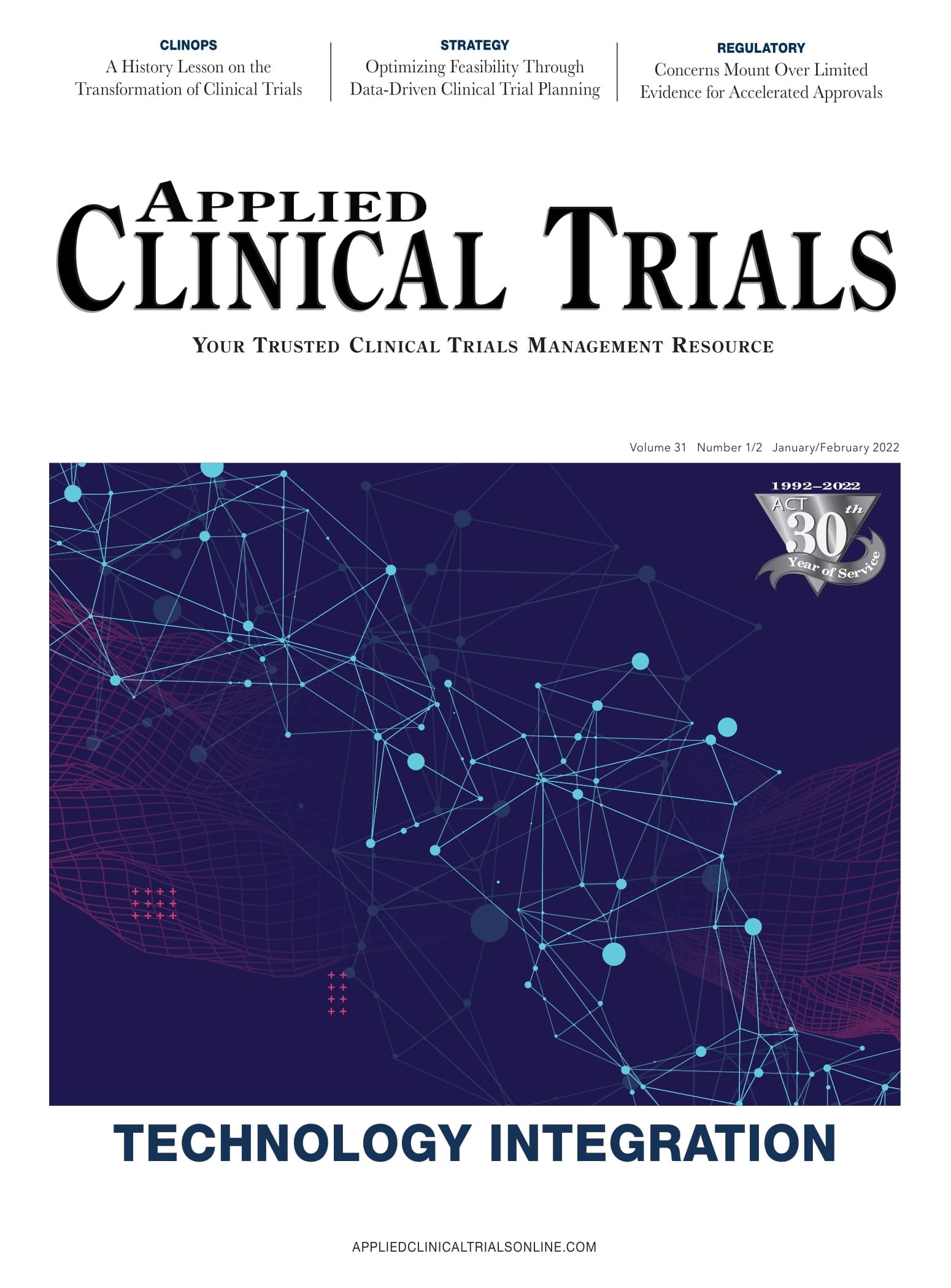
Zenocutuzumab Shows Durable Efficacy in NRG1 Fusion-Positive Cancers in Phase II eNRGy Trial
February 13th 2025The Phase II eNRGy trial showed durable antitumor activity with zenocutuzumab (Bizengri) in patients with NRG1 fusion–positive cancers, particularly non-small cell lung cancer and pancreatic cancer.